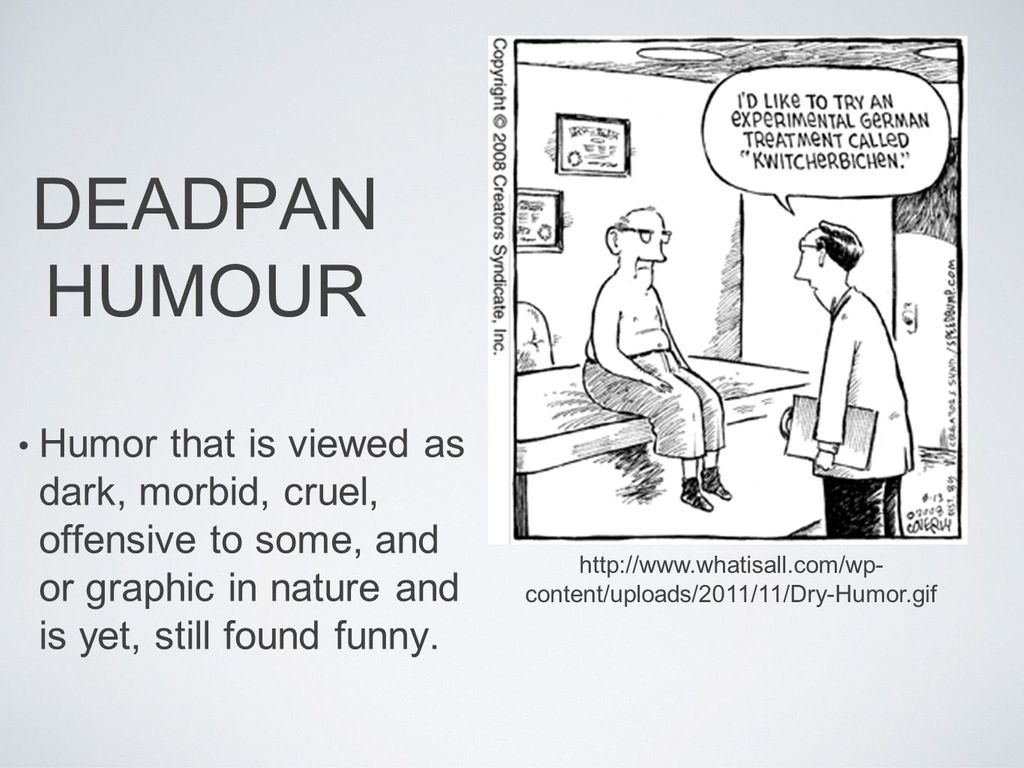Deadpan humour is an art form that has captivated audiences for generations. It involves delivering jokes or humorous content with a completely straight face, often leaving the audience wondering if the performer is serious. This unique style of comedy relies heavily on tone, timing, and context to elicit laughter. As one of the most subtle and sophisticated forms of comedy, deadpan humour has become a staple in both traditional and modern entertainment.
From classic films to contemporary television shows, deadpan humour continues to evolve and thrive. Its ability to transcend cultural and generational boundaries makes it a timeless form of entertainment. By stripping away exaggerated expressions and gestures, this comedic style forces the audience to pay closer attention to the nuances of language, delivery, and context.
In this article, we will delve deep into the world of deadpan humour, exploring its origins, characteristics, and impact on modern comedy. Whether you're a fan of this style or curious about its mechanics, this article will provide you with valuable insights and examples to enhance your understanding.
Read also:P Diddy Liat Exploring The Iconic Figure In Music And Entertainment
What is Deadpan Humour?
Deadpan humour, also known as dry humour, is a comedic style characterized by delivering jokes or humorous content in a completely expressionless manner. The performer maintains a neutral facial expression and tone of voice, often leaving the audience to interpret the joke on their own. This style relies heavily on the audience's ability to recognize the absurdity or irony in the statement.
This form of comedy is not just about the words being spoken but also about the context and delivery. The absence of physical cues forces the audience to focus on the content and its underlying meaning, making it a highly engaging and interactive form of entertainment.
Origins and Evolution of Deadpan Humour
The roots of deadpan humour can be traced back to early forms of comedy, where performers used understatement and irony to captivate their audiences. Over time, this style has evolved and adapted to different cultural contexts, gaining popularity in various forms of media.
In the 20th century, deadpan humour became a staple in film and television, with iconic performers like Buster Keaton and Woody Allen pioneering this style. Today, it continues to thrive in stand-up comedy, sketch shows, and online platforms, proving its enduring appeal.
Key Characteristics of Deadpan Humour
Deadpan humour is defined by several key characteristics that distinguish it from other comedic styles:
- Expressionless Delivery: Performers maintain a neutral facial expression and tone of voice, creating an air of seriousness.
- Irony and Absurdity: The content often contains elements of irony, absurdity, or unexpected twists, challenging the audience's expectations.
- Subtlety: The humour is subtle and requires the audience to actively engage with the content to fully appreciate its comedic value.
How Deadpan Humour Works
The effectiveness of deadpan humour lies in its ability to create a cognitive dissonance in the audience. By presenting humorous content in a serious manner, it forces the audience to reconcile the contradiction between the delivery and the content. This mental process enhances the comedic impact, making the experience more rewarding for the audience.
Read also:Josh Hutcherson Partner Exploring The Life Career And Relationships Of The Talented Actor
Studies have shown that deadpan humour can increase engagement and retention, as it requires active participation from the audience. This makes it a powerful tool for storytellers, comedians, and content creators alike.
Examples of Deadpan Humour in Pop Culture
Deadpan humour has left an indelible mark on pop culture, with numerous examples across different media platforms:
- Buster Keaton: Known as "The Great Stone Face," Keaton's films are a masterclass in deadpan humour, combining physical comedy with expressionless delivery.
- Woody Allen: A pioneer of modern deadpan humour, Allen's films and stand-up routines often feature dry wit and intellectual humour.
- The Office (US): The popular sitcom features several characters, such as Steve Carell's Michael Scott, who employ deadpan humour to great effect.
These examples demonstrate the versatility and adaptability of deadpan humour in different contexts and formats.
Psychological Impact of Deadpan Humour
Research has shown that deadpan humour can have a profound impact on the audience's psychological state. By requiring active engagement and interpretation, it can enhance cognitive processes such as critical thinking and problem-solving. Additionally, the element of surprise and absurdity can trigger positive emotions, making it an effective tool for stress relief and mood enhancement.
A study published in the Journal of Positive Psychology found that participants exposed to deadpan humour experienced increased levels of happiness and satisfaction compared to those exposed to traditional comedy styles.
Challenges and Limitations of Deadpan Humour
While deadpan humour is a powerful comedic style, it is not without its challenges and limitations. One of the primary challenges is the potential for misinterpretation. Since the delivery lacks overt cues, some audiences may fail to recognize the humour, leading to confusion or indifference.
Additionally, the subtlety of deadpan humour can make it less accessible to certain demographics, particularly those unfamiliar with its nuances. This requires comedians and content creators to carefully consider their audience and context when employing this style.
Tips for Mastering Deadpan Humour
For those interested in mastering deadpan humour, here are some tips to consider:
- Practice Timing: Timing is crucial in deadpan humour. Experiment with different pacing to find what works best for your style.
- Develop Context: Create a context that supports the humour, ensuring the audience has enough information to appreciate the joke.
- Stay Neutral: Maintain a neutral expression and tone, allowing the content to speak for itself.
Deadpan Humour in Digital Media
The rise of digital media has opened new avenues for deadpan humour, allowing comedians and content creators to reach wider audiences. Platforms like YouTube, TikTok, and Instagram have become hotbeds for this style, with creators experimenting with short-form content and viral formats.
One notable example is the success of "Dogs with Jobs," a viral video series that combines deadpan humour with adorable dog antics. The series has garnered millions of views, demonstrating the enduring appeal of this comedic style in the digital age.
The Future of Deadpan Humour
As media continues to evolve, the future of deadpan humour looks promising. Advances in technology and changing audience preferences are creating new opportunities for comedians and content creators to innovate and experiment with this style.
With the increasing demand for authentic and engaging content, deadpan humour is likely to remain a staple in both traditional and digital media. Its ability to transcend cultural and generational boundaries ensures its relevance in an ever-changing landscape.
Conclusion
In conclusion, deadpan humour is a sophisticated and versatile form of comedy that continues to captivate audiences worldwide. By delivering jokes with a straight face and relying on subtlety and context, it challenges the audience to actively engage with the content, enhancing the comedic experience.
We encourage you to explore this style further and share your thoughts in the comments below. Don't forget to check out our other articles for more insights into the world of comedy and entertainment. Together, let's celebrate the art of deadpan humour and its enduring impact on our lives.
Table of Contents
- What is Deadpan Humour?
- Origins and Evolution of Deadpan Humour
- Key Characteristics of Deadpan Humour
- How Deadpan Humour Works
- Examples of Deadpan Humour in Pop Culture
- Psychological Impact of Deadpan Humour
- Challenges and Limitations of Deadpan Humour
- Tips for Mastering Deadpan Humour
- Deadpan Humour in Digital Media
- The Future of Deadpan Humour


